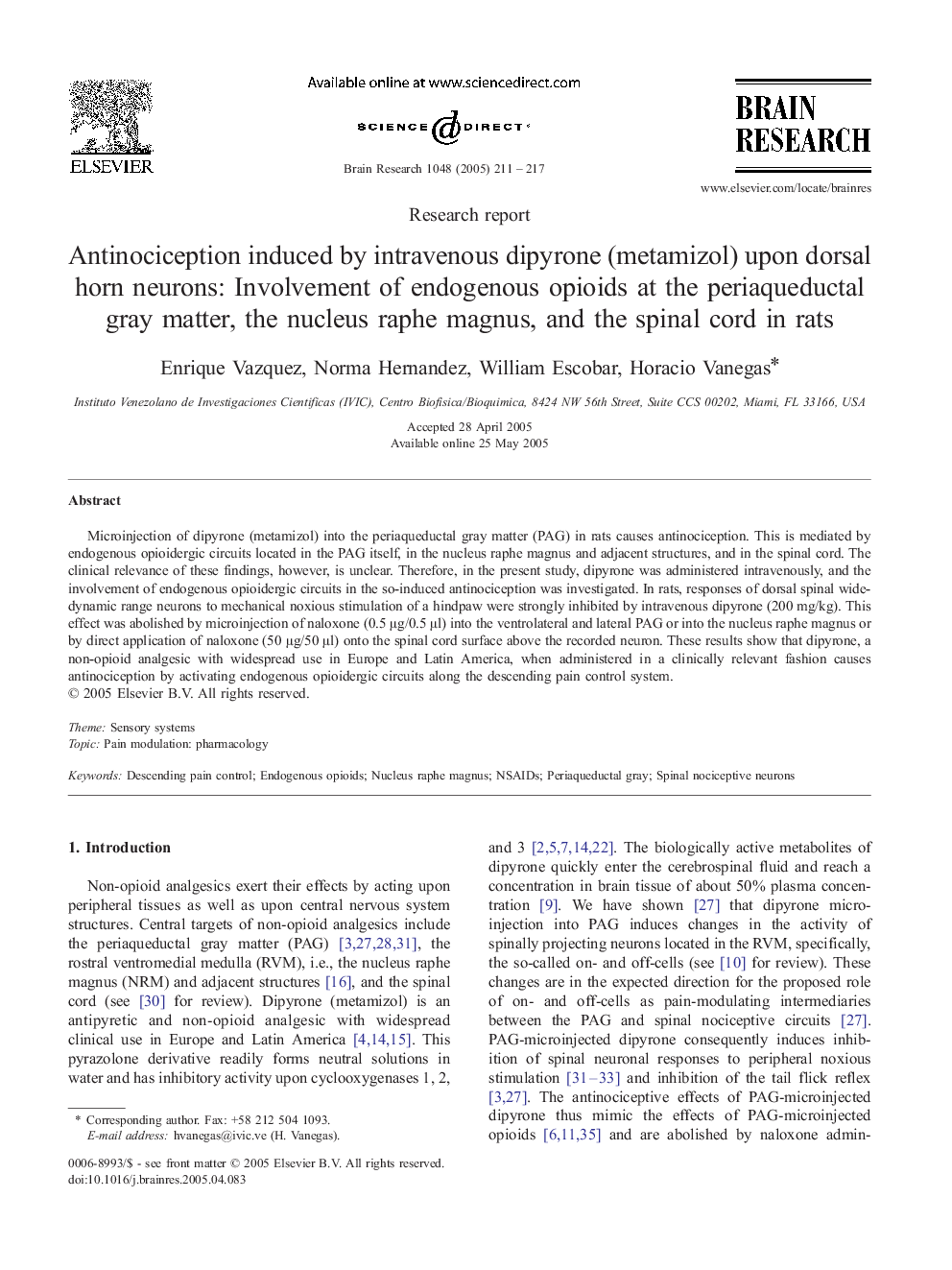| Article ID | Journal | Published Year | Pages | File Type |
|---|---|---|---|---|
| 9416217 | Brain Research | 2005 | 7 Pages |
Abstract
Microinjection of dipyrone (metamizol) into the periaqueductal gray matter (PAG) in rats causes antinociception. This is mediated by endogenous opioidergic circuits located in the PAG itself, in the nucleus raphe magnus and adjacent structures, and in the spinal cord. The clinical relevance of these findings, however, is unclear. Therefore, in the present study, dipyrone was administered intravenously, and the involvement of endogenous opioidergic circuits in the so-induced antinociception was investigated. In rats, responses of dorsal spinal wide-dynamic range neurons to mechanical noxious stimulation of a hindpaw were strongly inhibited by intravenous dipyrone (200 mg/kg). This effect was abolished by microinjection of naloxone (0.5 μg/0.5 μl) into the ventrolateral and lateral PAG or into the nucleus raphe magnus or by direct application of naloxone (50 μg/50 μl) onto the spinal cord surface above the recorded neuron. These results show that dipyrone, a non-opioid analgesic with widespread use in Europe and Latin America, when administered in a clinically relevant fashion causes antinociception by activating endogenous opioidergic circuits along the descending pain control system.
Keywords
Related Topics
Life Sciences
Neuroscience
Neuroscience (General)
Authors
Enrique Vazquez, Norma Hernandez, William Escobar, Horacio Vanegas,
